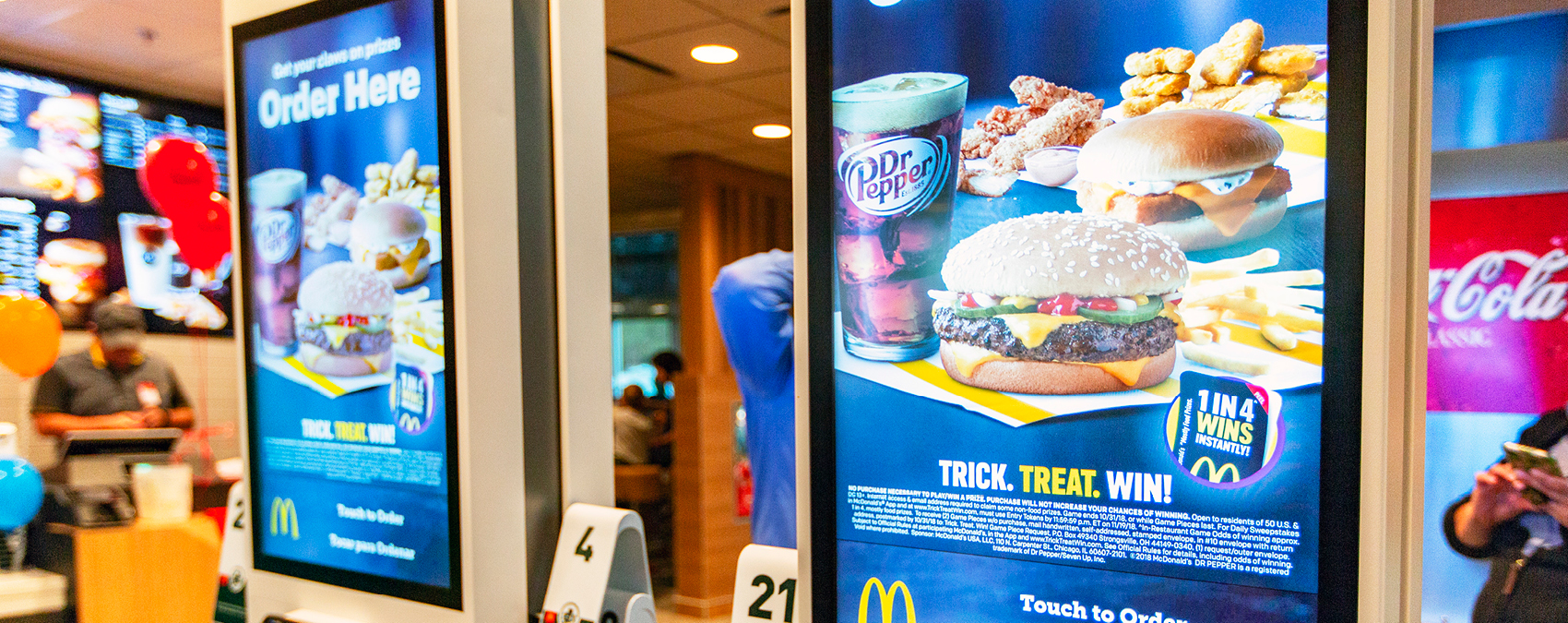We have all heard industry-leading CMOs talk about how technology is changing the way they interact with their customers. The sense of urgency is undeniable; evolve and enhance the customer experience using technology, or be left behind. There can be no doubt; technology is a powerful tool in influencing consumer behavior and engagement. Hit the mark and revolutionize an industry, miss the mark and become irrelevant. No need to look any further than the rental car and taxi industries in the post-Uber era.
No other corporate leader has been more candid about this reality than Steve Easterbrook, CEO of McDonald’s Corporation. It was two years ago when Easterbrook asked his organization worldwide “Do we want to wait and be disrupted, or do we want to be the disrupter?”. McDonald’s doubled down and made significant investments in technology platforms adding order kiosks, mobile order/pay and McDelivery®, partnering with Uber Eats and Skip the Dishes.
Easterbrook is not alone in anticipating the threat of disruption in the restaurant industry. A recent Oracle survey of restaurant owners expressed doubts over their ability to keep up with the speed of mobile technology innovations, while 59% believe their companies face the threat of disruption from more mobile-enabled competitors.
”There can be no doubt, technology is a powerful tool in influencing consumer behavior and engagement. Hit the mark and revolutionize an industry, miss the mark and become irrelevant.
Pat KenneySenior Management Director
The race to be the QSR industry disruptor utilizing technology innovations is on, and the pace will only accelerate moving forward
As much as QSR innovators have been dedicating significant resources and investments to leading mobile technology platforms, they are also in the same race to deliver technology platforms that optimize the in-store experience. A positive QSR in-store experience can turn a passing visit into an everyday routine and offer a sustainable forum to communicate brand messaging.
”A positive QSR in-store experience can turn a passing visit into an everyday routine and offer a sustainable forum to communicate brand messaging.
An immediately obvious solution is digital signage, powered by geolocation coding and AI to deliver a personalized and segmented customer connection. Of course, this is a game-changing tech initiatives that industry-leading QSR companies are moving quickly to implement. However, the in-store experience requires a much broader approach that should operate in tandem with predictive modeling on digital menu boards.
QSR Marketers need to be able to use technology to validate that in-store messaging is connecting and converting, to determine whether or not they are winning with their customers and be able to evaluate which campaigns are delivering results.
Getting in-store merchandising right has always challenged QSR marketers. The focus has been on delivering great creative and portioning display real estate to each media program. The truth is that today’s customer has a limited capacity to accept an onslaught of messaging.
So, marketers must ask: Are investments in tech being made to determine if customers are receiving your message? Are your merchandising campaigns engaging? Did customers react as planned? Is there an ROI on the campaign?
Leading-edge marketers are starting to pay attention to an emerging suite of tech tools to measure the effectiveness of in-store merchandising – MerchTechTM
IMS MerchTechTM (short for Merchandising Technology) monitors merchandising compliance and utilizes analytics to correlate placement to performance. Data sets combine traditional POS data with more advanced data generated by tech solutions that measure audience engagement by utilizing digital signage, beacon and visual analysis technology.
The IMS MerchTechTM analytics platform delivers insights that allow marketers to make campaign decisions in real-time. For all asset types – digital or static – a dashboard view for QSR marketers should be one click away from displaying key merchandising metrics:
-
-
- Campaign locations
- Compliance reporting
- Audience engagement metrics
- A/B testing variables
- Correlating sales data
- Campaign ROI
-
Applications of MerchTechTM for QSR marketers are extensive, though the pace of adoption is lagging other retail and CPG marketers
Take a deeper look into how IMS MerchTechTM compliance solutions are helping an international Alc/Bev client improve compliance rates of in-store POS displays through beacon technology.
The good news is that SAAS solutions exist to ease the cost and time of implementation. While there is a broad scope of opportunities for deploying MerchTechTM to gather key insights at retail and quickly impact campaign performance, here are two scenarios that QSR Marketers might find particularly applicable:
Using audience metrics, including demographic and psychographic insights to A/B test creative content and execution
Imagine a scenario where a QSR marketer is trying to create a more appealing in-store experience for families to increase store visits. A digitally-based activity nook is deployed that measures dwell time, demographics and psychographic insights. The marketer can test the impact of different creative approaches on the audience and understand the emotional impact on both children and their parents. Ultimately, this data can be correlated with store revenue and average check performance to evaluate if families are increasing their frequency and length of store visits.
Using beacon technology to locate and validate the compliance of point-of-order signage correlated to cell phone data
Imagine a scenario where a QSR marketer wants to determine if point-of-order signage affixed to registers is effective in generating mobile loyalty reward card participation. A beacon is inserted in a printed sign that has content promoting the mobile loyalty card program. The marketer can confirm through beacon data which locations have the sign displayed and correlate the placement to cell phone data measuring the sign-up and use of the mobile loyalty card. This data is compared to locations without the register signage to determine if the message is effective and warrants further deployment by market.
If you are a QSR marketer interested in launching a Merchandising technology platform – here is a roadmap to success:
Consolidate the Data – To measure merchandising effectiveness, QSR marketers require visibility to the content and placement of in-store messaging. This requires a centralized business solution for all asset types that allows for all data points to be tracked from campaign spend to deployment and engagement. This does not mean there is no room for variability and localized campaigns, it does though require that the data run through a centralized solution.
Transform Data into Insights – An effective Merchandising Technology platform needs to provide marketers with an easy to use tool that provides actionable insights in easy to read dashboards. The business value is the translation of key learnings into more effective merchandising solutions.
Be Scalable – The reach of Merchandising Technology and supporting metrics is extensive for a discipline that is truly in its infancy. The opportunities will only expand as digital platforms and audience engagement tools become more cost effective and pervasive. It is imperative to choose a tech provider that will continue to invest in the platform and will push the boundaries of what the technology can do for marketers.
What are next steps?
Ask the right questions – Are customers receiving your message? Are your campaigns engaging? Did customers react as planned? Is there an ROI on the campaign?
If you’d like to the answers to those questions, IMS is ready to assist with turnkey MerchTechTM solutions that will capture critical consumer data and transform it into actionable insights. Contact us today.

Article Author: Pat Kenney
Pat Kenney is a Senior Management Director at IMS, she leads a cross functional team of professionals partnering with ideation agencies to execute marketing campaigns and solutions for leading global clients. Services include creative design, both digital and static, international sourcing, print production and supply chain and deployment services.

